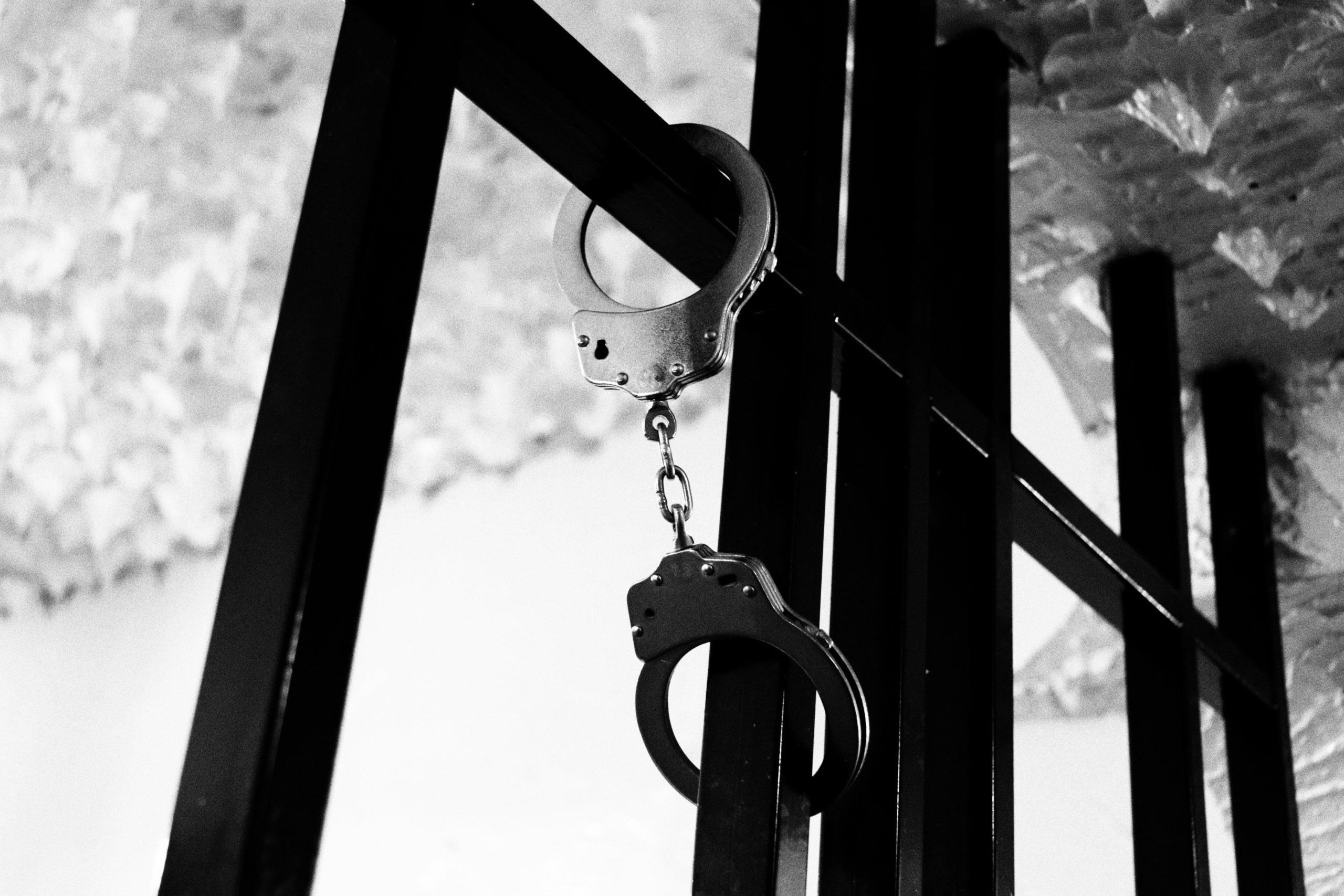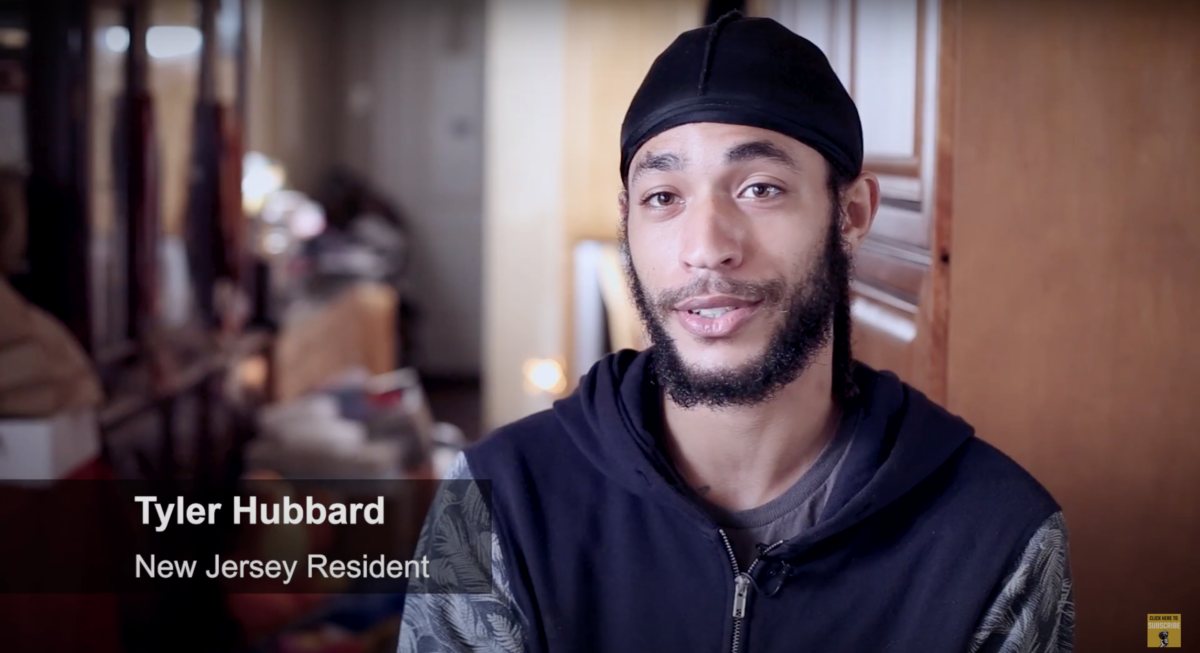Bail Reform Helps Countless People. Why Don’t We Hear More of Their Stories?
Personal narratives can help the public understand the benefits of bail reform, but telling these success stories presents its own share of challenges.

In a short video published in 2018, Tyler Hubbard recounts being arrested and charged with second degree aggravated assault in New Jersey after getting into a “big argument” with his mother’s husband. “That was basically my first time ever in the system,” he says in the video. “I was mainly thinking, ‘I hope I don’t lose my job.’ I wouldn’t have anything when I got out.”
Until the mid-2010s, Hubbard’s bail would have been set at upwards of $100,000, money he says he couldn’t have pulled together. But in 2017, New Jersey became one of the first U.S. states to virtually do away with cash bail. And that meant Hubbard was able to return home while he awaited trial—and go back to his job as an automotive technician—without paying anything.
“I would’ve been there a lot longer if things weren’t how they are,” Hubbard says. “Since I’m not in jail, I can continue working, follow my dreams.”
Hubbard is one of tens of thousands of people who have benefited from bail reform measures in places like New Jersey and New York, which passed a law in 2019 prohibiting judges from setting bail for a number of lower-level offenses. In total, at least 14 states and dozens of local jurisdictions have adopted policies aimed at reducing the use of cash bail. And while the data around these efforts remains scattered, studies have generally shown that the vast majority of people aren’t rearrested after they’re released. Instead, they go about their everyday lives and, with very few exceptions, return to court for their hearings.
But as common as these success stories are, personal narratives like Hubbard’s don’t make the news. In fact, when the American Civil Liberties Union of New Jersey set out to make the 2018 video highlighting the positive effects of bail reform, Hubbard was the only person it could find who was willing to publicly share his experience. “We knew it was helping people’s lives and we really struggled to tell the story,” said Alexander Shalom, senior supervising attorney at the ACLU-NJ.
The ACLU understood the power of personal narratives in defending the new bail reform law, and went so far as to hire a public relations firm to help find individuals willing to share their stories, something Shalom says the organization had never done before. But even with the assistance of a PR firm and the ACLU’s own connections to public defenders and other advocates, the search came up dry. “People didn’t want to tell the story,” Shalom said.
Many of the people who had benefited from bail reform had ongoing cases they didn’t want to endanger, said Shalom. Others, whose cases may have been quickly dismissed, didn’t want to have their names connected to an arrest that otherwise might have been behind them. Some didn’t even realize that something notable had happened to them. “It becomes a nonevent for people,” Shalom said.
Amid this void of positive stories, many news outlets have instead fixated on the occasional outlier cases involving people who have committed crimes after being released without bail. This barrage of sensational coverage has largely dominated the narrative around pretrial reform, and in its wake New York has twice walked back its 2019 bail reform law—allowing bail to be set in more and more instances. Meanwhile in New Jersey, lawmakers passed a law tightening bail rules for gun charges, and efforts are at play in other places in the country to walk back reforms.

These negative stories have served to paint a misleading portrait of the effects of bail reform. The data out of New Jersey, for example, shows that both the pretrial jail population and overall crime fell after the 2016 law’s enactment. Overall, there is no solid data linking bail reform to higher levels of crime. But the lack of stories highlighting the positive impacts of bail reform also means that the public “lose[s] out on the real humanity that is implicated in these cases,” Shalom said. “The data is important and it’s compelling … but what really brings about important policy change is marrying the data and the humanity.”
The roadblocks the ACLU ran into in New Jersey have stymied advocates in the rest of the country, too. Cherise Fanno Burdeen, former CEO of the Pretrial Justice Institute, worked on bail reform efforts around the country for 15 years before launching her own consulting firm. In all that time, “it was difficult to find people to tell their stories about bail reform,” she said.
The apprehension on the part of people who have been directly impacted, and potentially helped, by bail reform is understandable. Their cases are often still pending, and even though they may have been able to return home, they can risk jeopardizing case outcomes by talking to the press. “We’ve heard of stories of judges or prosecutors being upset when their cases are being broadcasted,” said Zoë Adel, research and advocacy manager at the bail fund Envision Freedom. “We never know what a judge might do to retaliate.”
And if the less punitive pretrial system is working in defendants’ favor, they’re likely going to their jobs and maintaining their housing. Having their names publicly connected to an arrest, even for something low level, could put both in danger.
There are plenty of reasons why people who have been arrested might not want their community to know, said Jackie Gosdigian, senior policy counsel at Brooklyn Defenders. She routinely has clients who “haven’t told their partner, haven’t told their family, they’re extremely ashamed of even having been arrested.” Her clients’ number one concern, Gosdigian said, is getting fired if an employer finds out by reading a story.
“They want to rebuild and get a job and do all of these things,” said Alex Staropoli, the director of advocacy and communications at the Fair Share Housing Center, who has worked on bail reform in past roles. “If you’re the poster child for this advocacy thing that highlights that you were … charged with a crime, that’s not necessarily the greatest blank slate.”
Many people may also not want to relive the “unbelievably traumatic process” of being arrested, handcuffed, and taken to central booking, and potentially waiting as long as 24 hours to be released, Gosdigian said. The trauma is so intense, she added, that when she meets clients who have been through it and are going to be released, she doesn’t push them to discuss the details of what happened to them.
Working with the press also takes time, which is a barrier for people who typically have more pressing priorities in their lives. “They have children, they have jobs, they have interviews, they have medical appointments,” said Scott Hechinger, civil rights attorney and founder of Zealous, a national education and advocacy initiative. Others may be in drug treatment programs or even just trying to stay on top of their cases. “They don’t want to add to that by trying to work with a reporter,” Gosdigian said.
Due to the less severe nature of their charges, some beneficiaries of bail reform may feel less driven to speak out, said Sarita Daftary, co-director of the advocacy organization Freedom Agenda. The vast majority of Freedom Agenda’s members “served time for really serious charges and for very long amounts of time,” Daftary said. “If you’ve been able to avoid some of the worst consequences of the system, then it’s just harder to build up the motivation to put your story out there.” If someone is charged with a lower-level crime, “you might be like, ‘I just want to leave this behind me entirely.’ If you spent 20 years in prison, maybe you can’t leave this behind entirely.”
The stories of those who benefit from bail reform are also rarely straightforward. Many people may be struggling to find legal employment, or navigating mental health issues or the pressures of providing for their families. “There’s always a fear that the opposition is going to try to pick apart those stories,” Staropoli said. “They are going to be attacked and people are going to look up their records.”
That fear is also front of mind for the public defenders and advocacy organizations who often serve as liaisons between directly impacted people and reporters. They “sometimes play a protective and gatekeeping role,” Hechinger said, which may lead them to say no without actually giving their clients the chance to say yes. Hechinger says his firm is working on training defenders and others on when and how to work with the media.
If cases are resolved more quickly, people may also not have as much ongoing contact with lawyers or services. Many are sent to supervised release, but those service providers have no responsibility to work with people to tell their stories. “It’s easier to access folks who are detained and caged pretrial, oftentimes because they’re literally inside and locked away,” Hechinger said.
There’s also the question of whether journalists are actually interested in telling positive stories about bail reform. Hechinger noted that journalists who have shown interest in the subject are still seeking “the sensational success stories”—the people who were released and went on to complete a college degree, get an amazing job, or even save someone’s life. But the reality is that success often looks far more mundane.
“The everyday normalcy of freedom, just waking up in your bed and putting on your own shoes … just having breakfast with your child, being able to run errands for those in need of caretaking, showing up at your job … that doesn’t sell,” Hechinger said. These sorts of stories may not get buy-in from editors who in many cases still subscribe to the old industry mantra, “If it bleeds, it leads.”
“We’ve been really wired to react more to fear than to anything,” said Fanno Burdeen. “I do think it is harder to get people to care about positive stories.”
But the media’s focus on bail reform horror stories—which comes at the expense of the thousands of people who’ve been able to continue their daily lives thanks to the new regime—seems at least partly to blame for the backlash to these laws. “When we don’t tell the positive stories … the negative stories hold a lot more weight,” Staropoli said. “Not having that constant or even collection of positive stories for what this policy has meant makes it harder to defend.”
Though instances of people committing crimes while on pretrial release are the incredibly rare exceptions to the rule, they become “the dominant story that’s being told, even when it’s not based in facts,” Staropoli added.
There are emerging signs that the coverage imbalance is having effects beyond its influence on public perceptions. When researchers with the Vera Institute of Justice observed court proceedings in three New York counties in 2020, they found that although fewer than a third of cases were for bail-eligible charges, judges set bail or ordered someone to be detained in two-thirds of them. Daftary has heard a couple of judges say outright in court that they don’t want to make the front page of the New York Post, on the off chance a defendant they release goes on to commit a crime that makes the news.
Without media coverage that humanizes the beneficiaries of bail reform in a way that accurately conveys the positive effects of these changes, some advocates fear that the victories they’ve won over the past decade could be in peril. In places like New York, that’s already come true.
“I just devoted 15 years of my life to putting bail reform on the map to try to eliminate pretrial incarceration,” Fanno Burdeen said. “And yet it has been among the easiest of reforms to reverse.”
